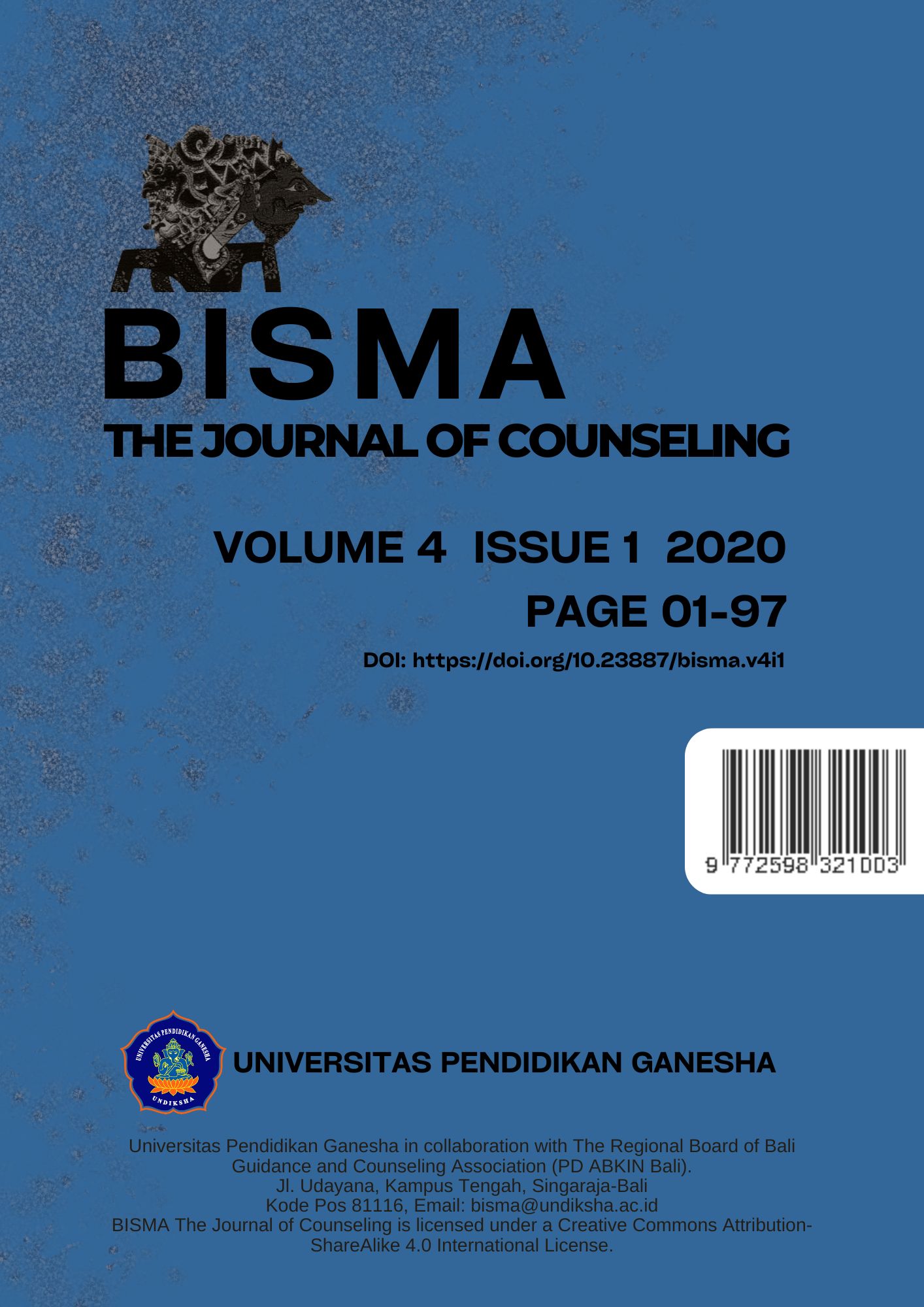Effect of Pressure Levels on Risk Levels of Deviant Behavior of Correctional Prisoners
DOI:
https://doi.org/10.23887/bisma.v4i1.24111Keywords:
Deviant Behavior, Correctional Prisoners, Health DisordersAbstract
The results of recentt study abaout mental health disorders status showed that 36% experienced mental health disorders in the form of anxiety and women, the incidence rate was higher than men, 61%: 39%. The study was conducted 62 surveys in 12 countries covering 22,790 correctional prison residents found that every 6 months there was a prevalence of psychosis in men 3.7% and women 4% major depression in men 10% and women 12% and personality disorders in men 65% men and 42% women. From these data, many Penitentiary Citizens experience mental health disorders such as stress and sexual deviations. Deviations committed by Penitentiary Members include such as hallucinating / fantasizing, masturbating, and biological violation activities carried out by men and women in Correctional Institutions. This study uses the General Strain Theory theory by Robert Agnew using a quantitative approach. The data collected uses primary data in the form of distributing questionnaires to a predetermined sample of Penitentiary Guards. From the results of the study above the level of risk of deviant behavior of Correctional Guidance Citizens continues to increase along with the increasing level of pressure experienced by Correctional Guidance Citizens.References
Agnew, R., & Brezina, T. (2019). General strain theory. In Handbook on crime and deviance (pp. 145-160). Springer, Cham.
Ariyanto, E. A. (2016). Tingkat Stress pada Narapidana Di Lapas Blitar. Jurnal Psikologi Indonesia, 5(3), 226–231.
Duri Kartika, C. (2015). Hubungan antara kecerdasan emosi dengan stres akademik mahasiswa [Universitas Muhammadiyah Surakarta]. http://eprints.ums.ac.id/37501/6/BAB II.pdf
Edy Susanto, M. (2019). Stress Kerja. Journal of Chemical Information and Modeling, 53(9), 1689–1699. https://doi.org/10.1017/CBO9781107415324.004
Febrian, M. R. (2019). Analisis implementasi penyelenggaraan promosi kesehatan rumah saki di RS Bhineka bakti husada tahun 2019 (Doctoral dissertation, Universitas Pembangunan Nasional Veteran Jakarta).
Herdiana. (2013). Hubungan Antara Keterampilan Berpidato dengan Prestasi Belajar PAI di SMP YPP Nurul Huda Surabaya. Journal of Chemical Information and Modeling, 53(9), 1689–1699.
Parkes, R. (2011). Hard times: Is the “rehabilitation revolution” bad news for enrichment activities with prisoners? British Journal of Community Justice, 9(2), 125–139.
Ratnawati, D., & Astari, I. D. (2019). Hubungan Tingkat Stres Dengan Perilaku Berpacaran Pada Remaja Di SMA X Cawang Jakarta Timur. Jurnal Profesi Medika : Jurnal Kedokteran Dan Kesehatan, 13(1). https://doi.org/10.33533/jpm.v13i1.908
Reynolds, K. L., & Harris, L. C. (2009). Dysfunctional customer behavior severity: An empirical examination. Journal of retailing, 85(3), 321-335.
Rochaniningsih, N. S. (2014). Dampak Pergeseran Peran Dan Fungsi Keluarga Pada Perilaku Menyimpang Remaja. Jurnal Pembangunan Pendidikan: Fondasi Dan Aplikasi, 2(1). https://doi.org/10.21831/jppfa.v2i1.2618.
Safitri, T. (2017). Strategi coping pada ibu muda yang mengalami stres pernikahan [Universitas Islam Negeri Sunan Ampel Surabaya]. http://digilib.uinsby.ac.id/15841.
Suranata, K., Atmoko, A., & Hidayah, N. (2017, August). Enhancing Students' Resilience: Comparing The Effect of Cognitive-Behavior And Strengths-Based Counseling. In 2nd International Conference on Innovative Research Across Disciplines (ICIRAD 2017). Atlantis Press
Su’ud, S. (2011). Remaja dan perilaku menyimpang. Perilaku Menyimpang, 1(2), 34–43.
Surya, M. (2004). Psikologi pembelajaran dan pengajaran. Bandung: Pustaka Bani Quraisy, 73-4.
Wijaya, K. A. (2015). Hubungan antara Dukungan Keluarga dengan Tingkat Stress Narapidana di Lembaga Pemasyarakatan Kelas IIA Kabupaten Jember.









